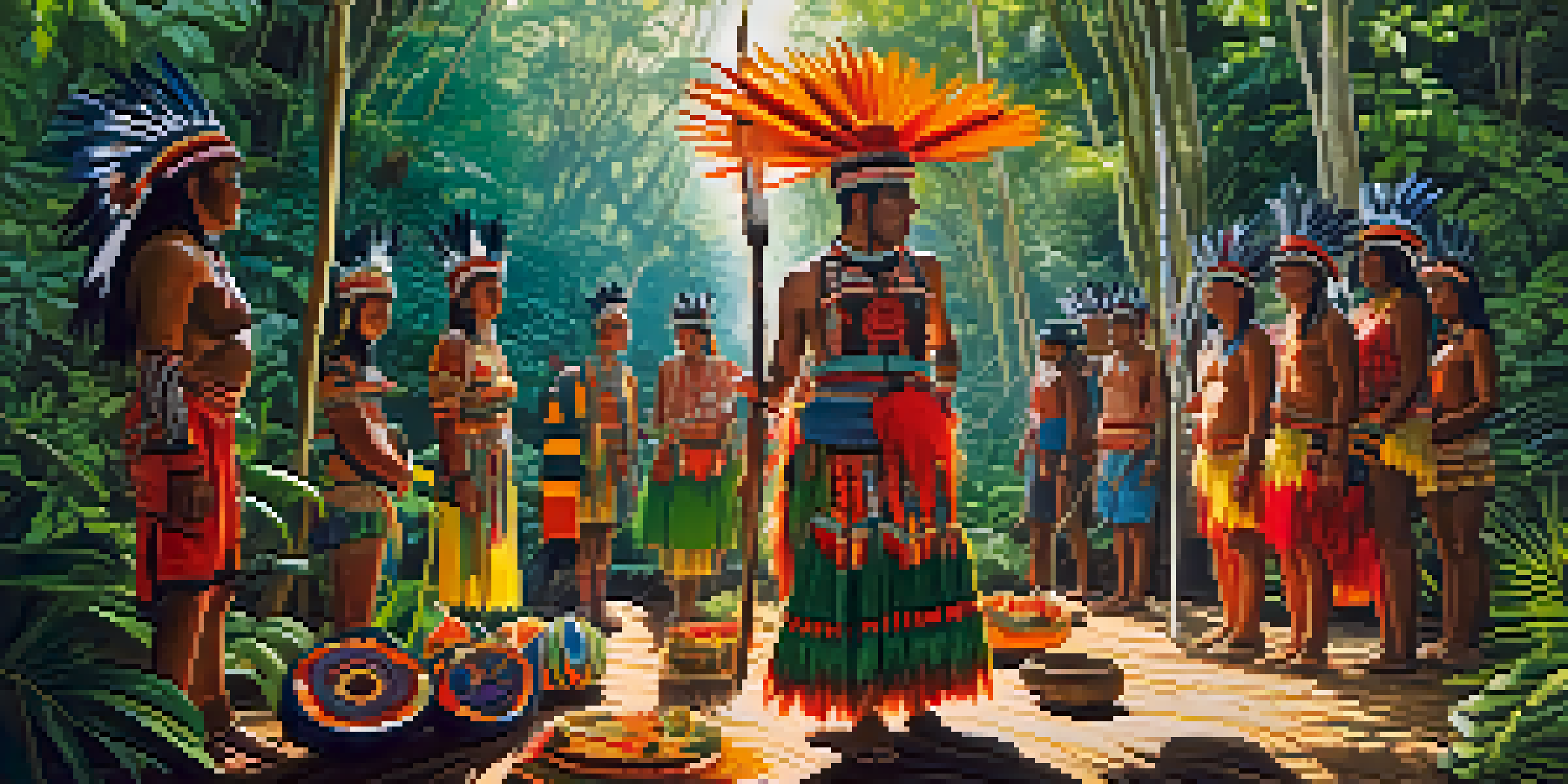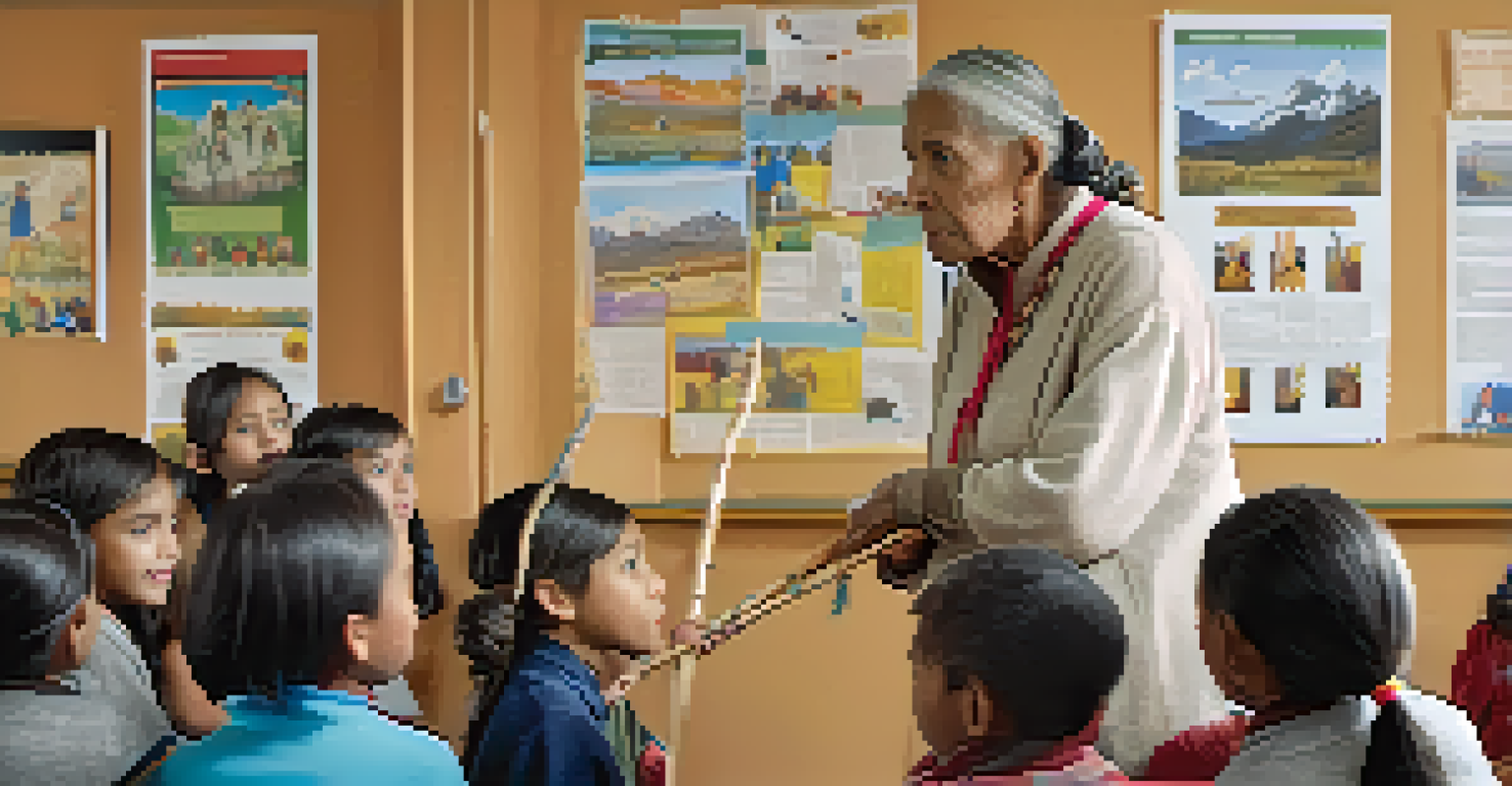The Language Diversity of Brazil's Indigenous Groups

Introduction to Brazil's Indigenous Language Landscape
Brazil is home to a stunning array of Indigenous languages, reflecting the country's rich cultural heritage. With approximately 270 different languages spoken, these languages belong to various linguistic families, showcasing the diversity of Brazil's Indigenous groups. Each language is not just a means of communication but also a repository of history, tradition, and identity.
Language is the road map of a culture. It tells you where its people come from and where they are going.
The survival of these languages is crucial for the preservation of the unique cultures they represent. Unfortunately, many of these languages are endangered, with only a handful of speakers left. This situation underscores the importance of recognizing and valuing the languages as part of Brazil's national identity.
Understanding the language diversity in Brazil offers a window into the lives of Indigenous peoples. It highlights their relationship with the land, their social structures, and their worldview, fostering appreciation and respect for their cultures.
Major Indigenous Language Families in Brazil
Brazil's Indigenous languages can be categorized into several major families, each with its own unique characteristics. The Tupian language family, for example, includes widely spoken languages like Tupi and Guarani, which have influenced Brazilian Portuguese significantly. In contrast, the Macro-Jê family encompasses languages like Kayapó and Xavante, showcasing distinct phonetic and grammatical features.

Another important family is the Arawakan, which includes languages spoken in the Amazon region. This diversity illustrates not only the linguistic variety but also the cultural richness of the Indigenous groups. Each family encapsulates unique histories and traditions that deserve recognition and preservation.
Diverse Indigenous Languages in Brazil
Brazil hosts approximately 270 Indigenous languages, each representing unique cultures and histories.
The diversity of language families also indicates the geographical distribution of Indigenous populations. As these groups settled in various regions, their languages evolved, leading to the rich tapestry of dialects and linguistic nuances seen today.
The Role of Language in Indigenous Identity
For many Indigenous groups in Brazil, language is deeply intertwined with their identity. It serves as a vital link to their ancestors and cultural practices, shaping their worldview and social interactions. Language is not merely a tool for communication; it's a vessel for traditions, stories, and knowledge passed down through generations.
The preservation of language is the preservation of culture, a treasure trove of knowledge and identity.
When Indigenous people speak their native languages, they are affirming their identity and heritage. This connection fosters a sense of belonging and community, reinforcing social bonds among members. Moreover, language plays a crucial role in ceremonies, rituals, and cultural expressions, marking significant life events and seasonal celebrations.
However, as younger generations are increasingly exposed to Portuguese, many Indigenous languages face decline. This shift highlights the urgency of revitalizing Indigenous languages to maintain cultural identity and ensure the continuity of traditions.
Challenges Faced by Indigenous Languages
Despite their rich heritage, Indigenous languages in Brazil face significant challenges. One of the primary threats is the encroachment of modern society and globalization, which often leads to the marginalization of Indigenous cultures. As urbanization spreads, younger generations may prioritize Portuguese over their native tongues, resulting in a gradual language shift.
Additionally, political and economic factors play a role in this decline. Many Indigenous communities struggle for recognition and rights, which impacts their ability to promote and teach their languages. Limited resources and educational opportunities further exacerbate the situation, making it difficult to sustain language learning among youth.
Language Vital to Indigenous Identity
For Indigenous groups, language is a crucial link to ancestry and cultural practices, fostering community and belonging.
Efforts to document and revitalize these languages are crucial, but they require collaboration with Indigenous communities. Linguists, educators, and policymakers must work together to create programs that support language preservation and promote cultural awareness.
Successful Language Revitalization Initiatives
Despite the challenges, there are inspiring examples of language revitalization efforts across Brazil. Many Indigenous communities have established language schools, where children learn their native languages alongside Portuguese. These initiatives not only foster language skills but also instill pride in cultural heritage among the youth.
Organizations such as the Instituto do Patrimônio Histórico e Artístico Nacional (IPHAN) have supported these revitalization projects, emphasizing the importance of Indigenous languages in Brazil's cultural landscape. Collaborations with linguists and anthropologists have led to the creation of educational materials that reflect local languages and cultures.
These successful initiatives highlight the resilience of Indigenous communities and their commitment to preserving their languages. They serve as a reminder that with the right support and resources, it is possible to revitalize and sustain these vital elements of cultural identity.
The Importance of Documenting Indigenous Languages
Documentation of Indigenous languages is essential for their survival, as it creates records that can be used for teaching and revitalization. Linguists and researchers are increasingly recognizing the importance of working collaboratively with Indigenous speakers to document their languages accurately. This partnership ensures that the documentation process respects cultural nuances and context.
Written records, audio recordings, and digital resources play a critical role in preserving languages that are at risk of extinction. These materials can serve as valuable educational tools for future generations, enabling them to reconnect with their linguistic heritage. Moreover, they provide a foundation for language revitalization initiatives.
Revitalization Efforts Are Essential
Successful initiatives are underway to revitalize Indigenous languages, highlighting the resilience and commitment of these communities.
The documentation process itself can empower Indigenous communities, as it validates their languages and cultures. By recognizing their linguistic diversity, society as a whole can appreciate the depth and richness that these languages bring to Brazil's cultural mosaic.
Conclusion: Celebrating Brazil's Linguistic Heritage
The language diversity of Brazil's Indigenous groups is a testament to the country's rich cultural tapestry. Each language tells a story, encapsulating the history, traditions, and worldview of its speakers. Celebrating and preserving this linguistic heritage is essential for maintaining cultural diversity in Brazil.
As we move forward, it's crucial to foster respect and understanding for the Indigenous languages that enrich our society. By supporting revitalization efforts and advocacy for Indigenous rights, we can help ensure that these languages survive for future generations.

Ultimately, embracing the linguistic diversity of Brazil’s Indigenous peoples not only preserves their cultures but also enhances our collective identity as a nation. It’s a journey towards appreciation, respect, and celebration of the unique voices that shape Brazil’s narrative.